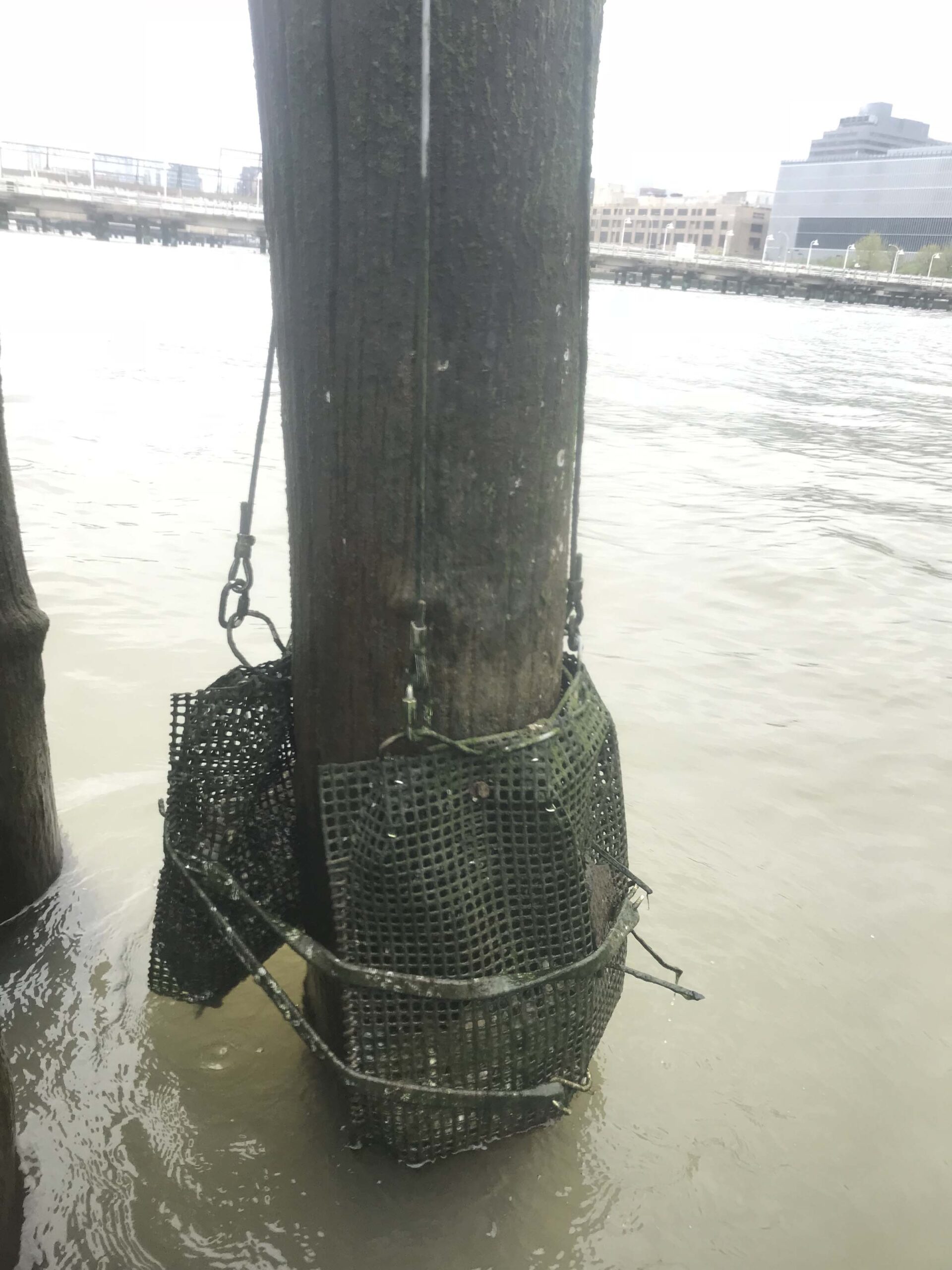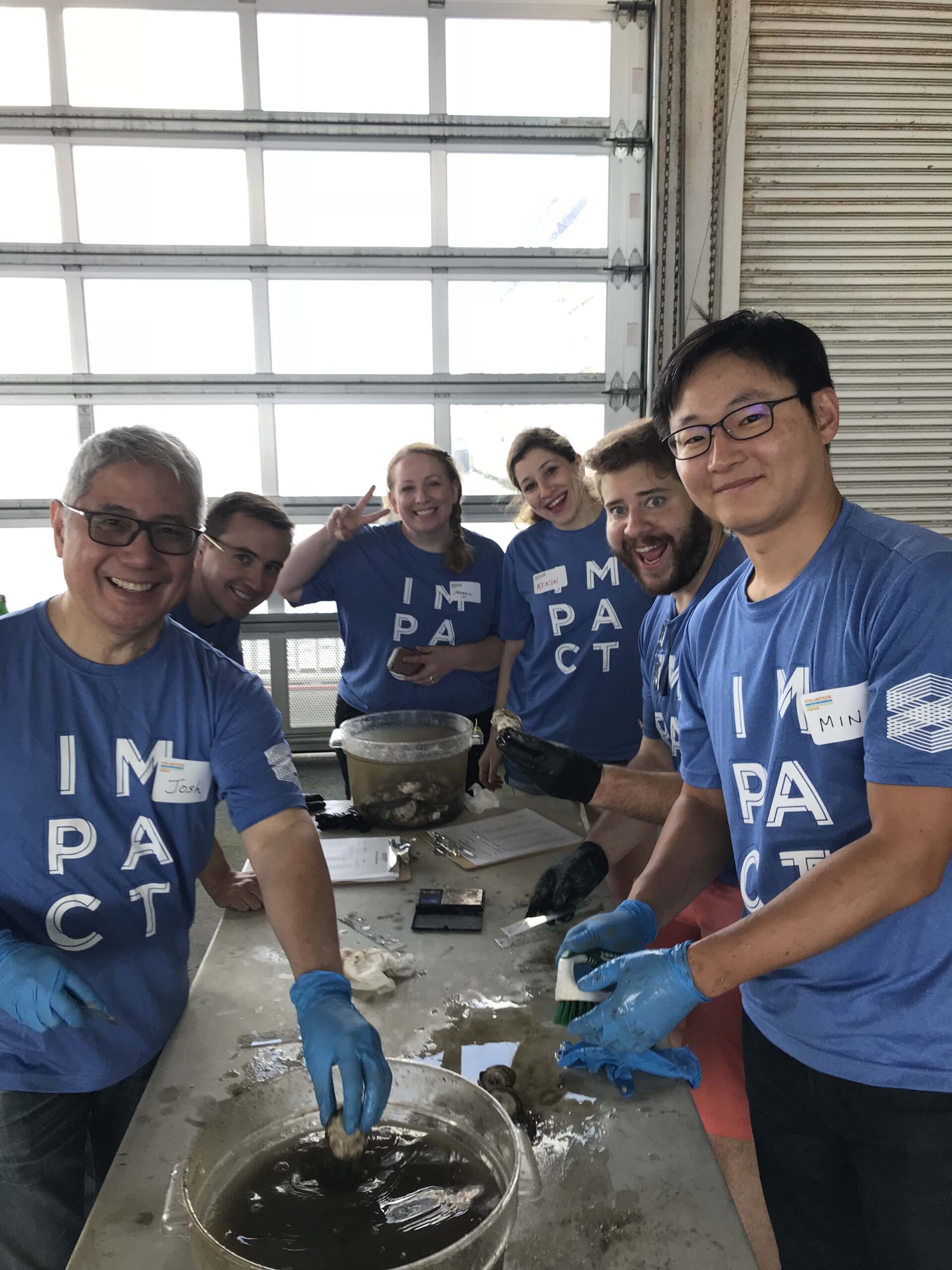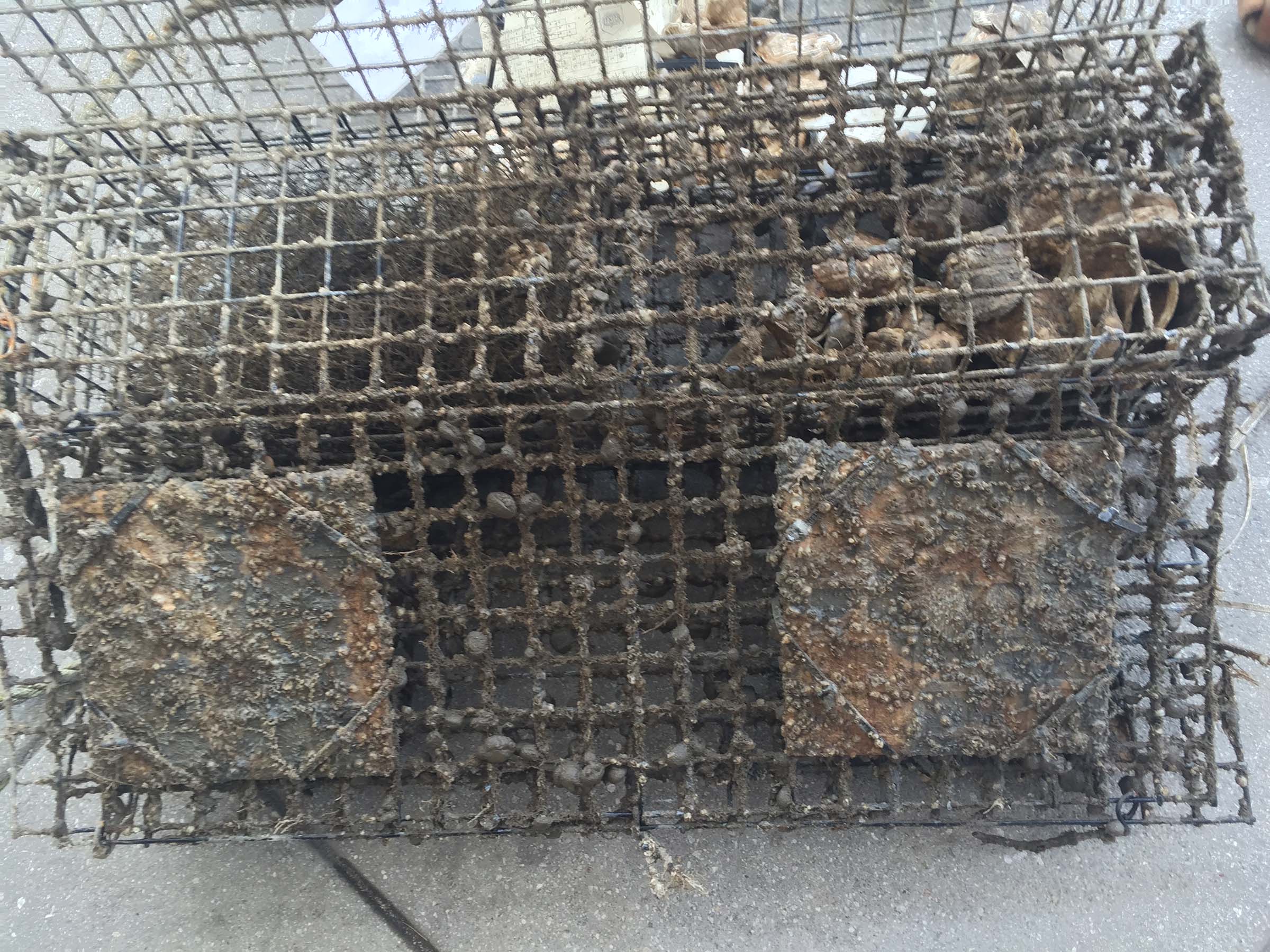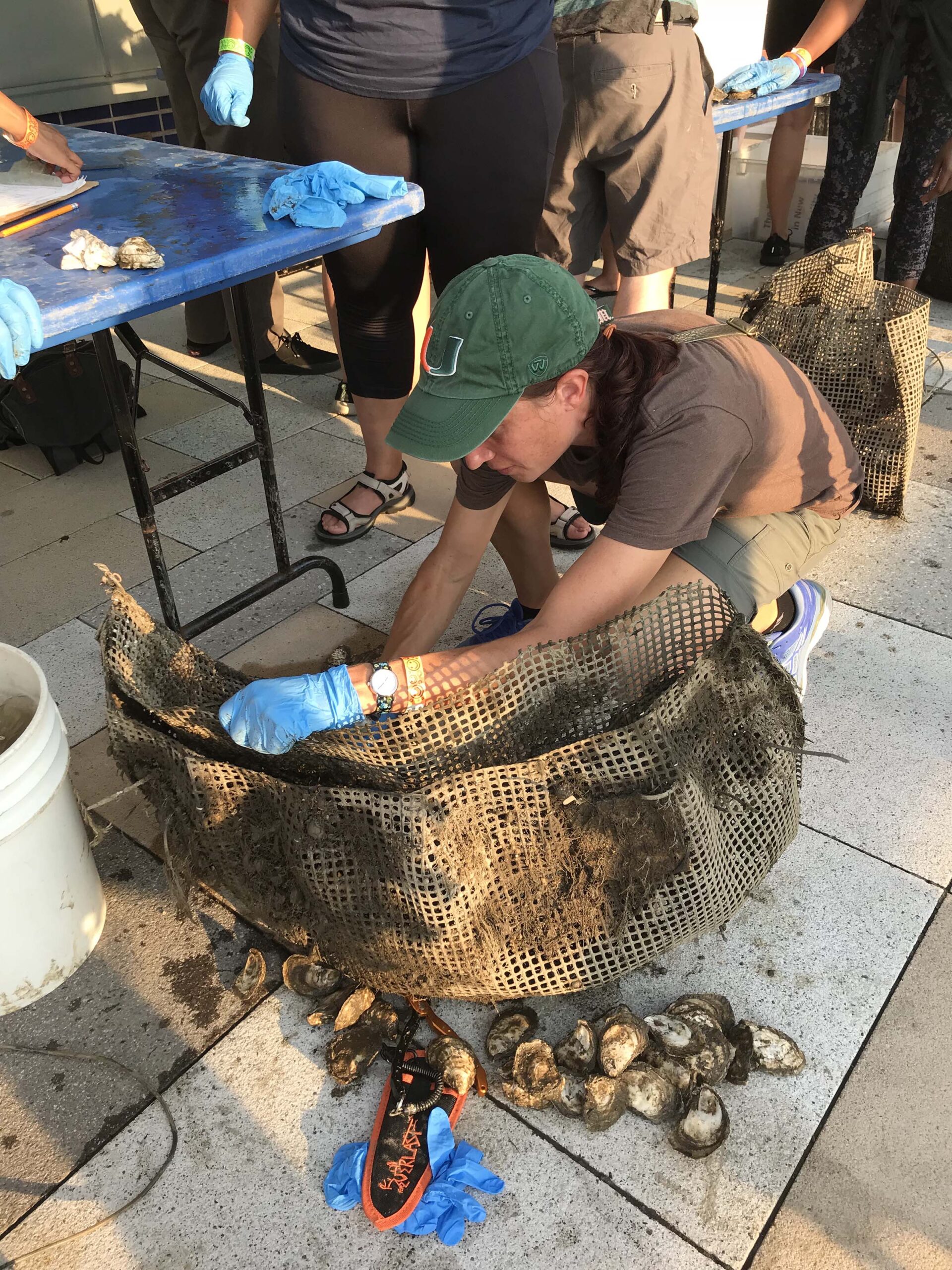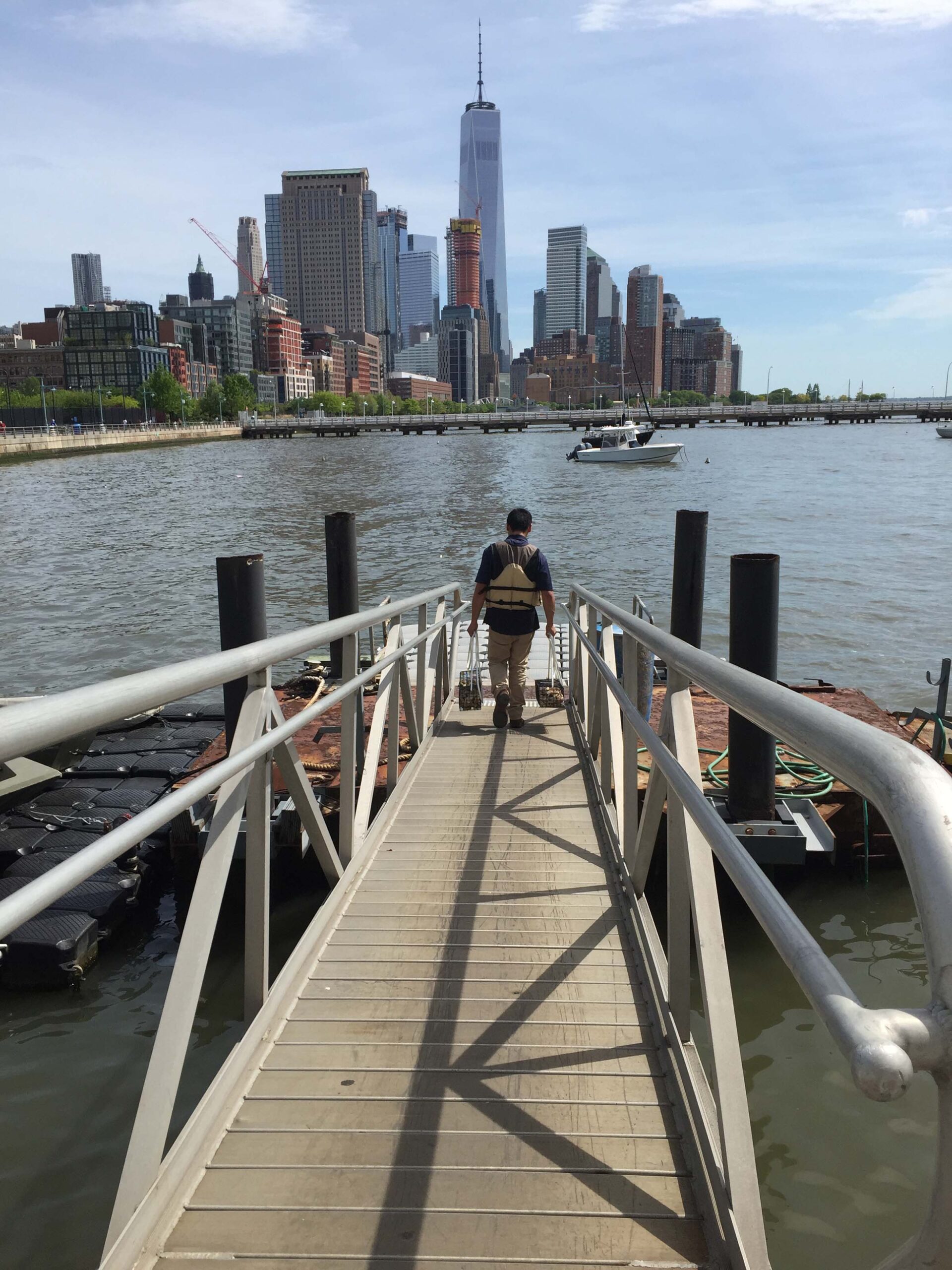Oysters are ecologically-critical filter feeders that support life in our local waterways by building habitat. Though the wild oyster population is a fraction of what it once was due to centuries of overharvesting and water pollution, organizations such as Hudson River Park and Billion Oyster Project are working to restore the bivalves to our local waterways.
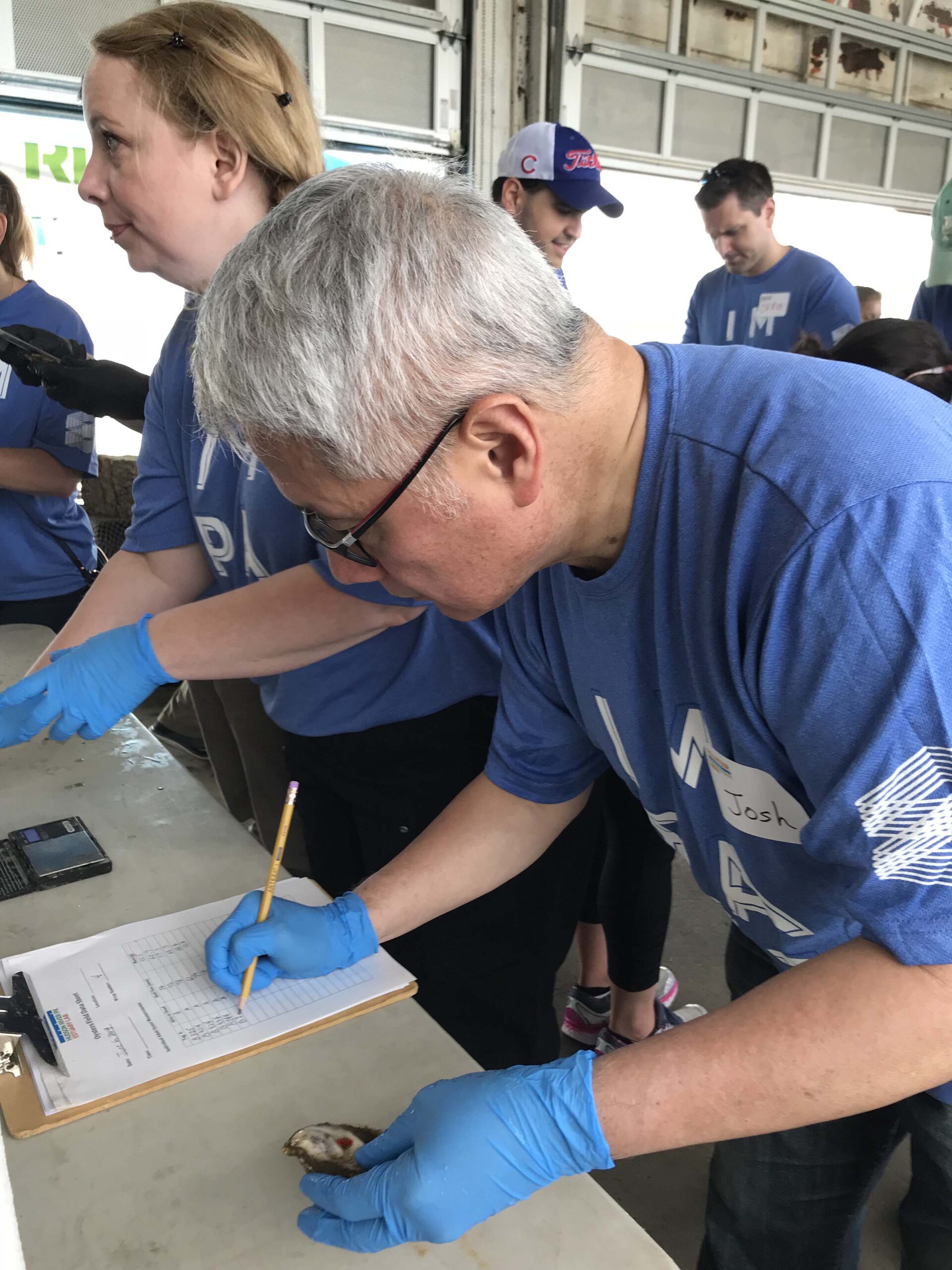 Pier 32 Oyster Study
Pier 32 Oyster Study
Each year, oyster wraps – aquaculture mesh enclosures deployed around old pilings at Pier 32 – are monitored by Park staff with the help of volunteers as a community science project that aims to assess oyster growth within the Park. Monitoring events connect volunteers to the River and its denizens through hands-on field science under the guidance of the Park’s River Project scientists.
This study laid the groundwork as a proof-of-concept for the now complete Tribeca Habitat Enhancement Project where over 200 submerged structures seeded with 11.2 million oyster spat (larvae) were deployed between Piers 32 and 26 in a concerted effort to enhance the biodiversity of the area. Read more about the Tribeca Project.
Oyster Stewardship
Hudson River Park hosts 15 Billion Oyster Project (BOP) oyster research stations at various Sanctuary locations monitored by teachers, students and community organizations. Hudson River Park’s four miles of waterfront esplanade and piers provide space to collect data on oyster growth, biodiversity and water quality.
Interested in getting your class involved? Email [email protected] for more information on BOP oyster research stations.
